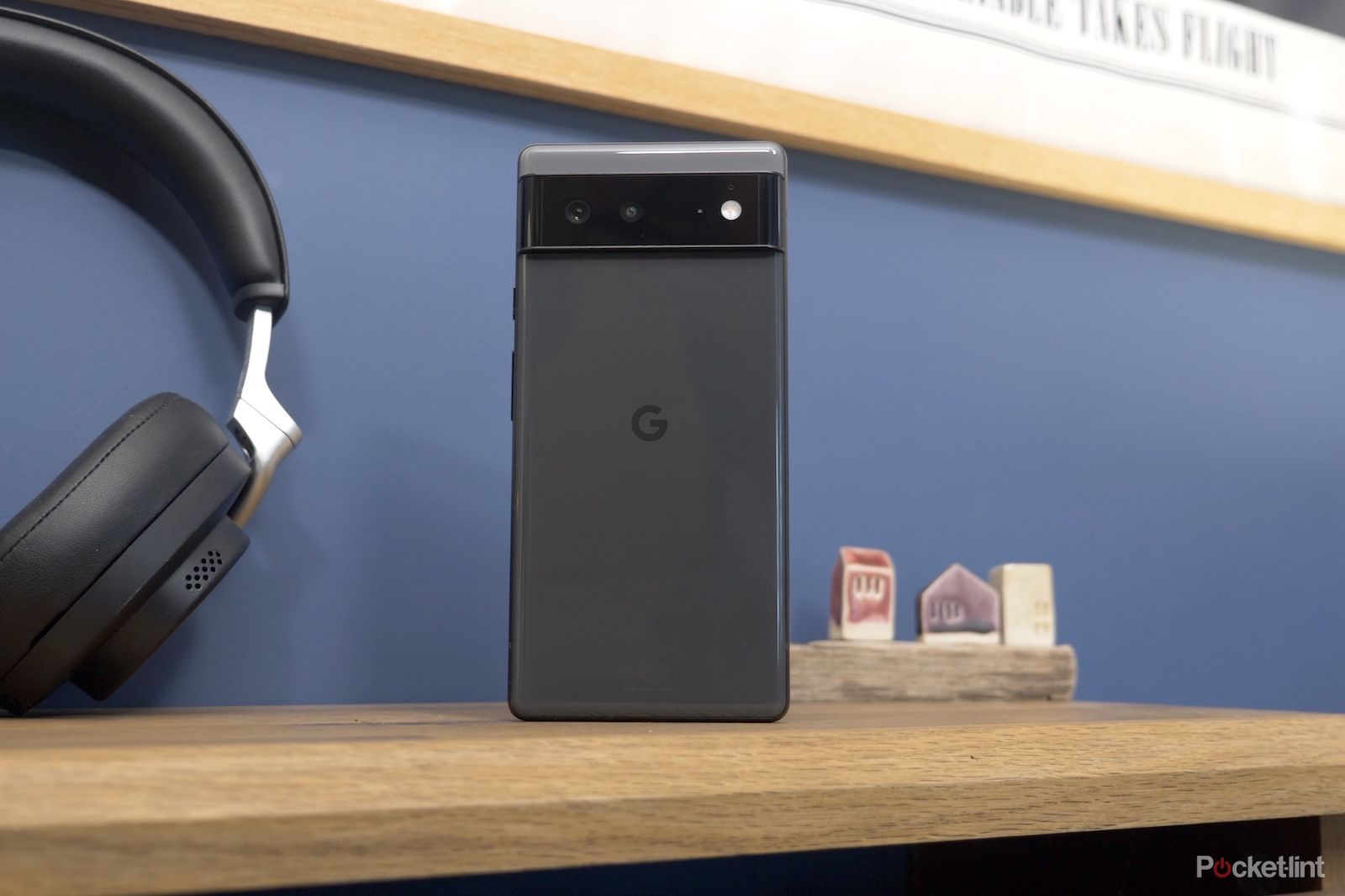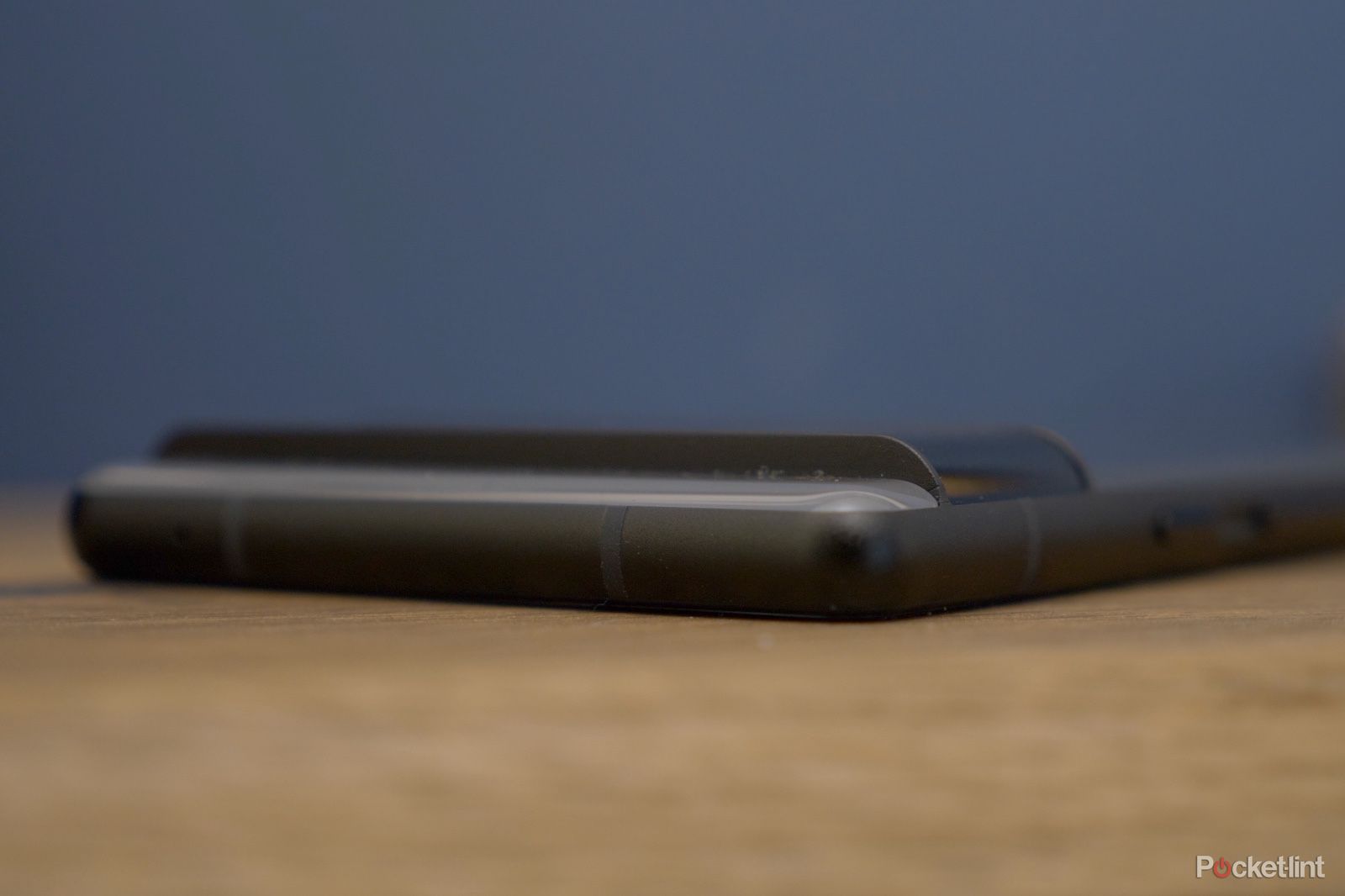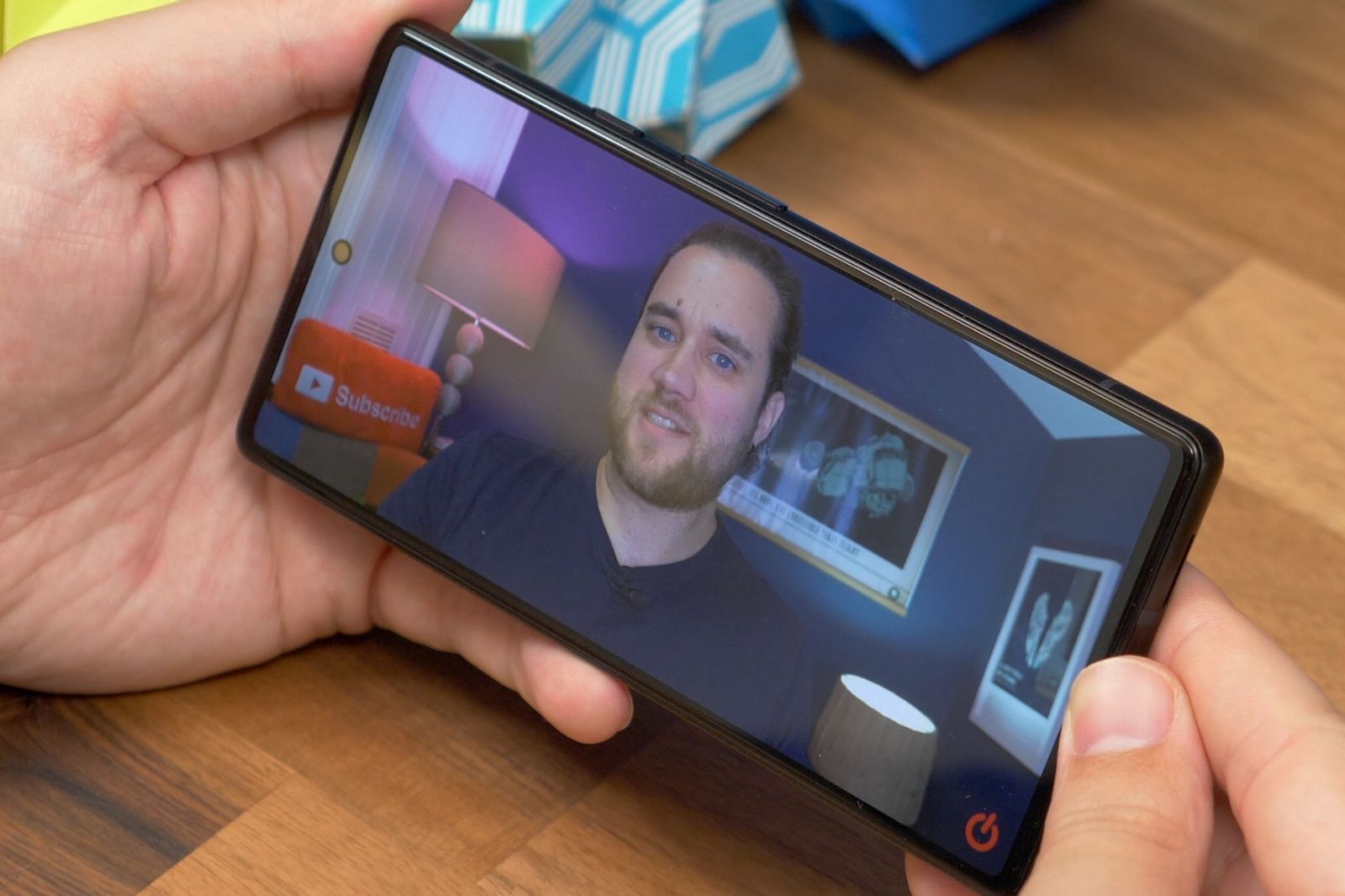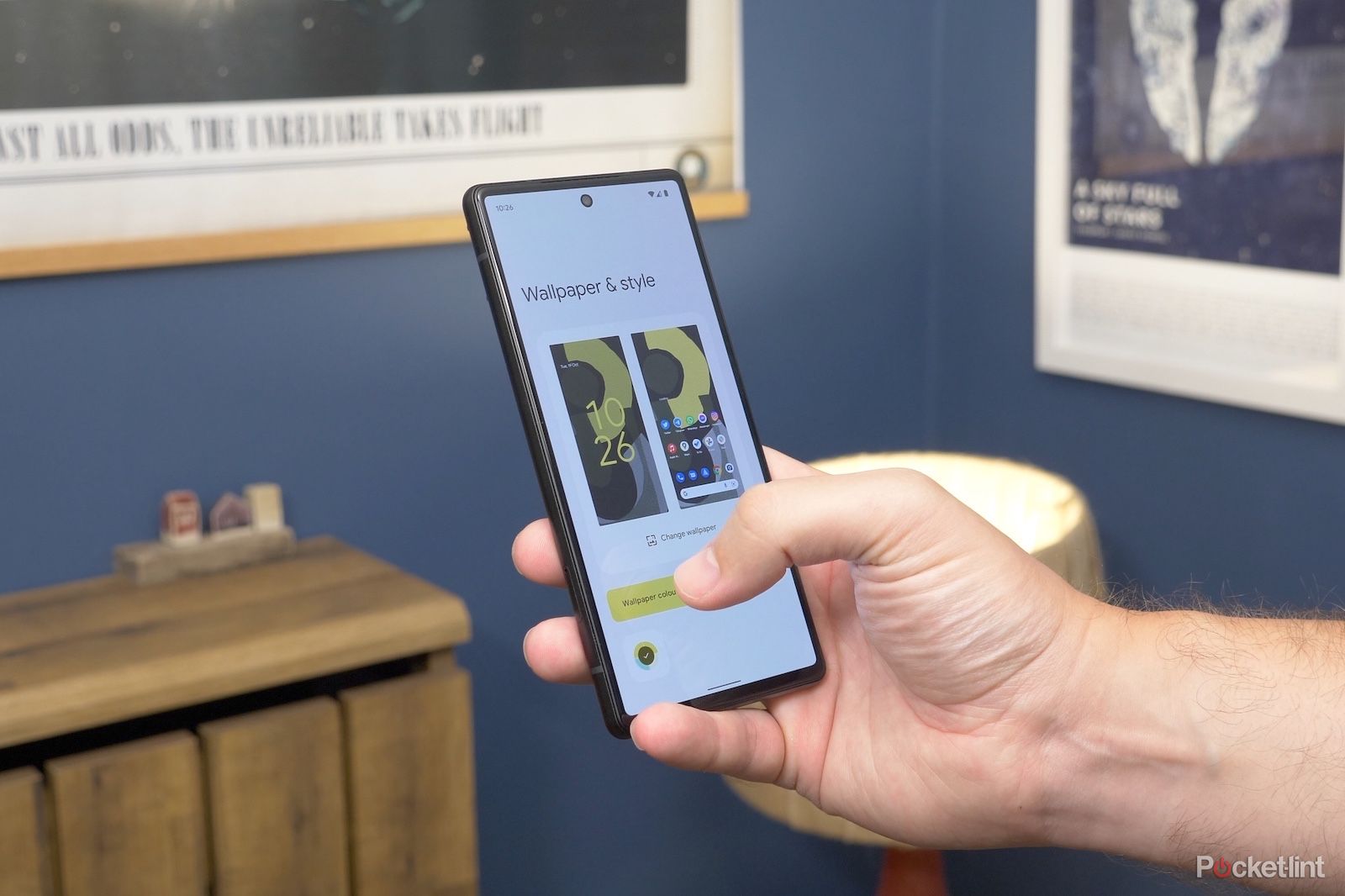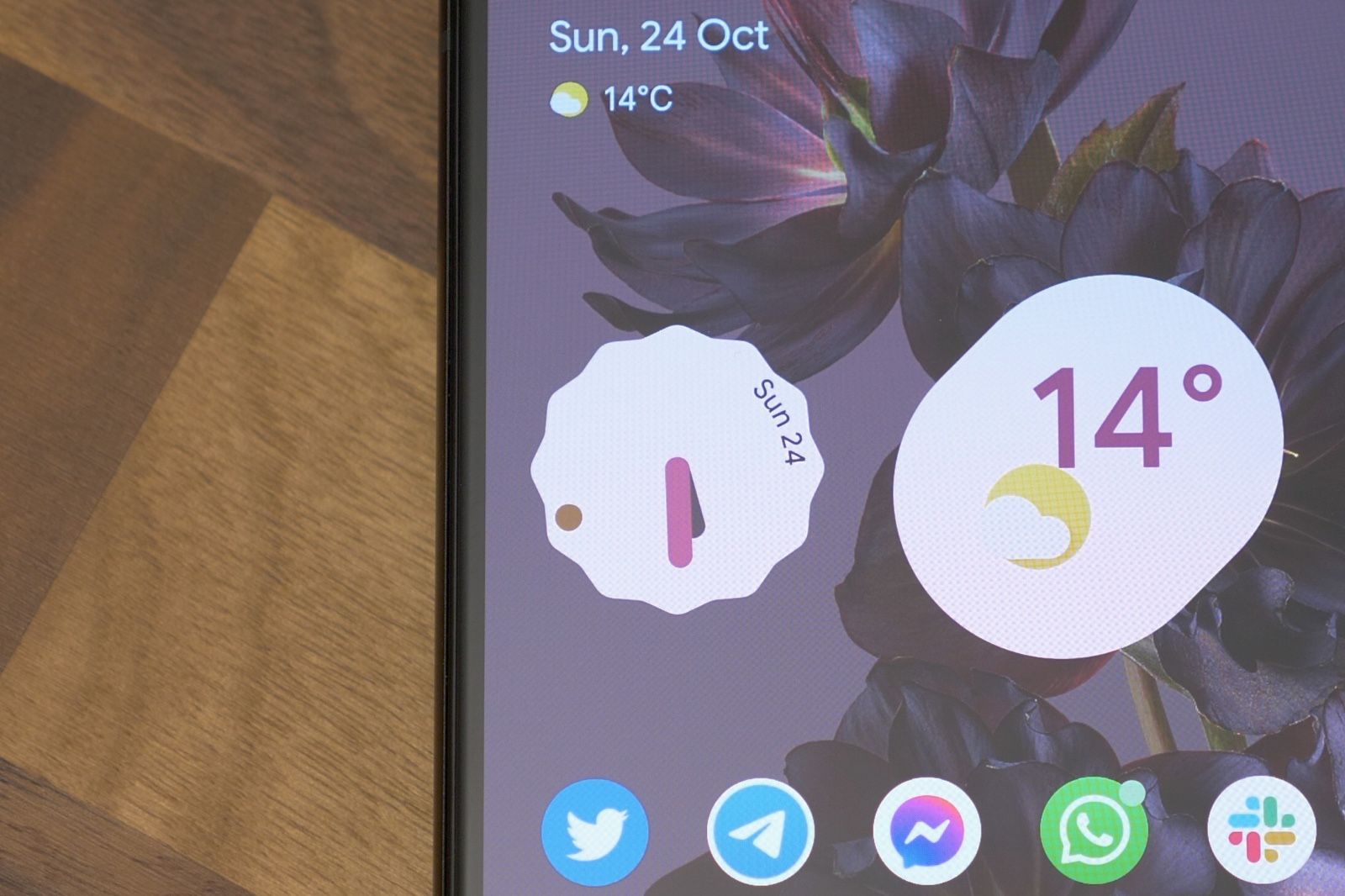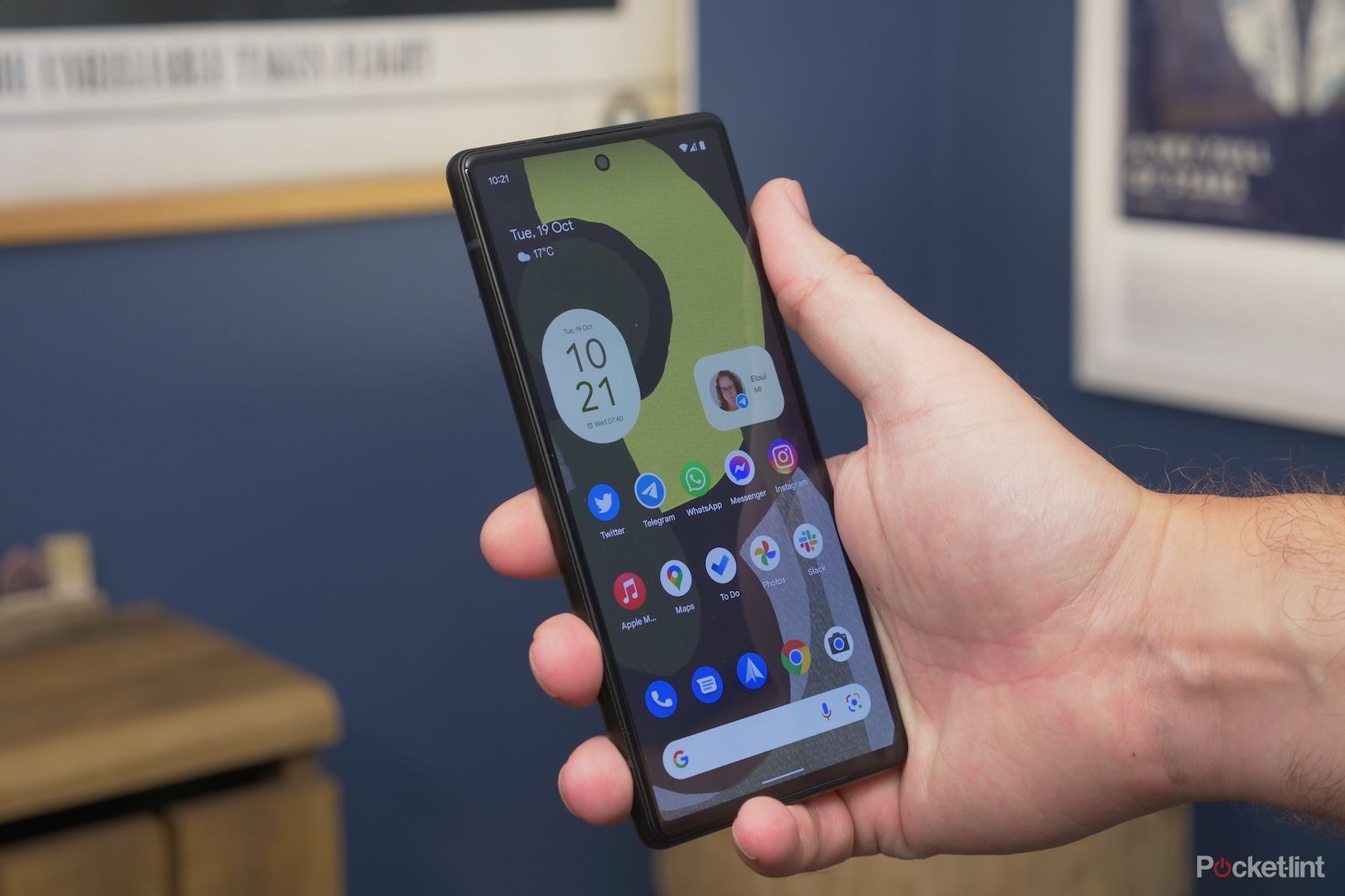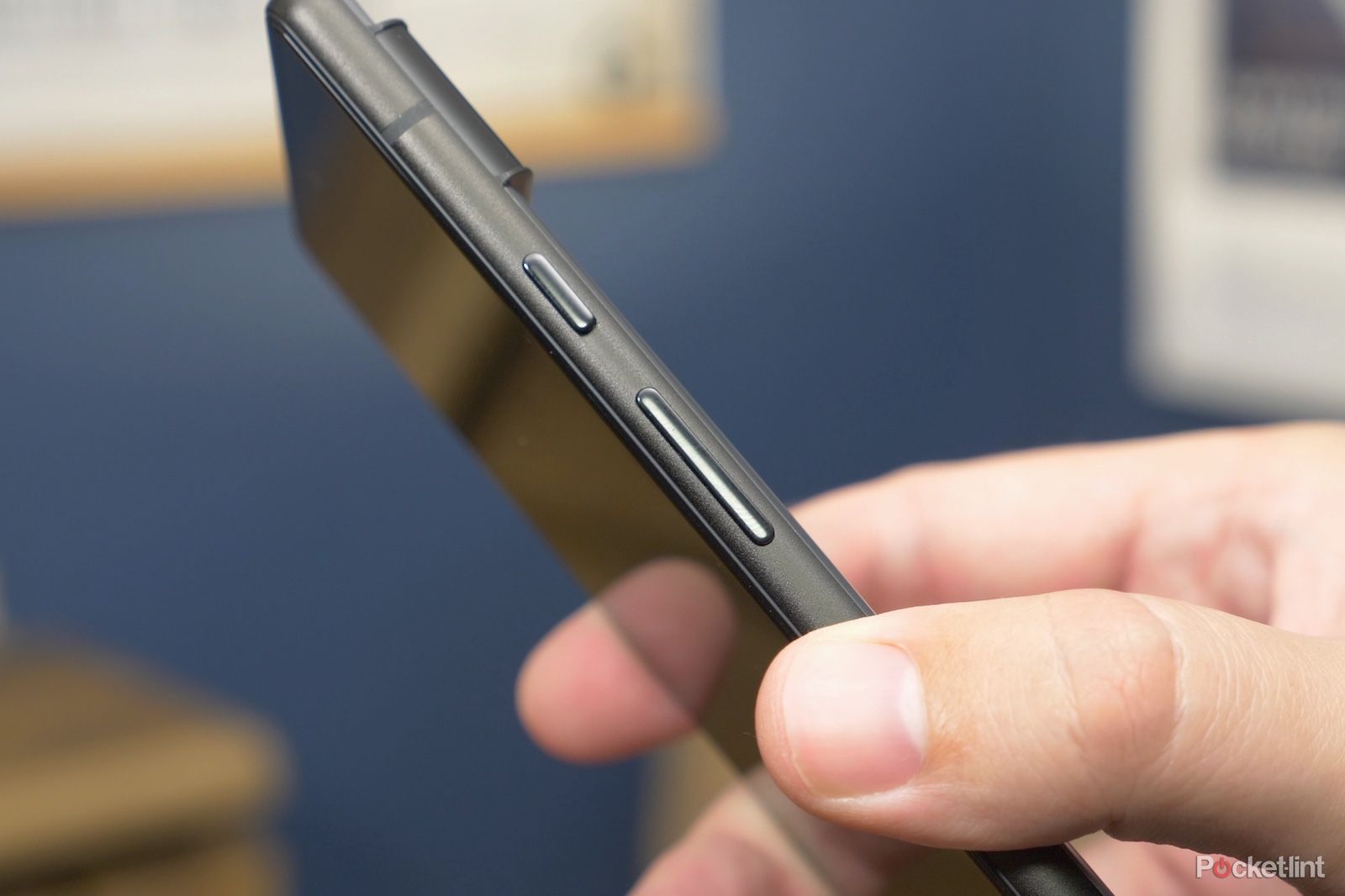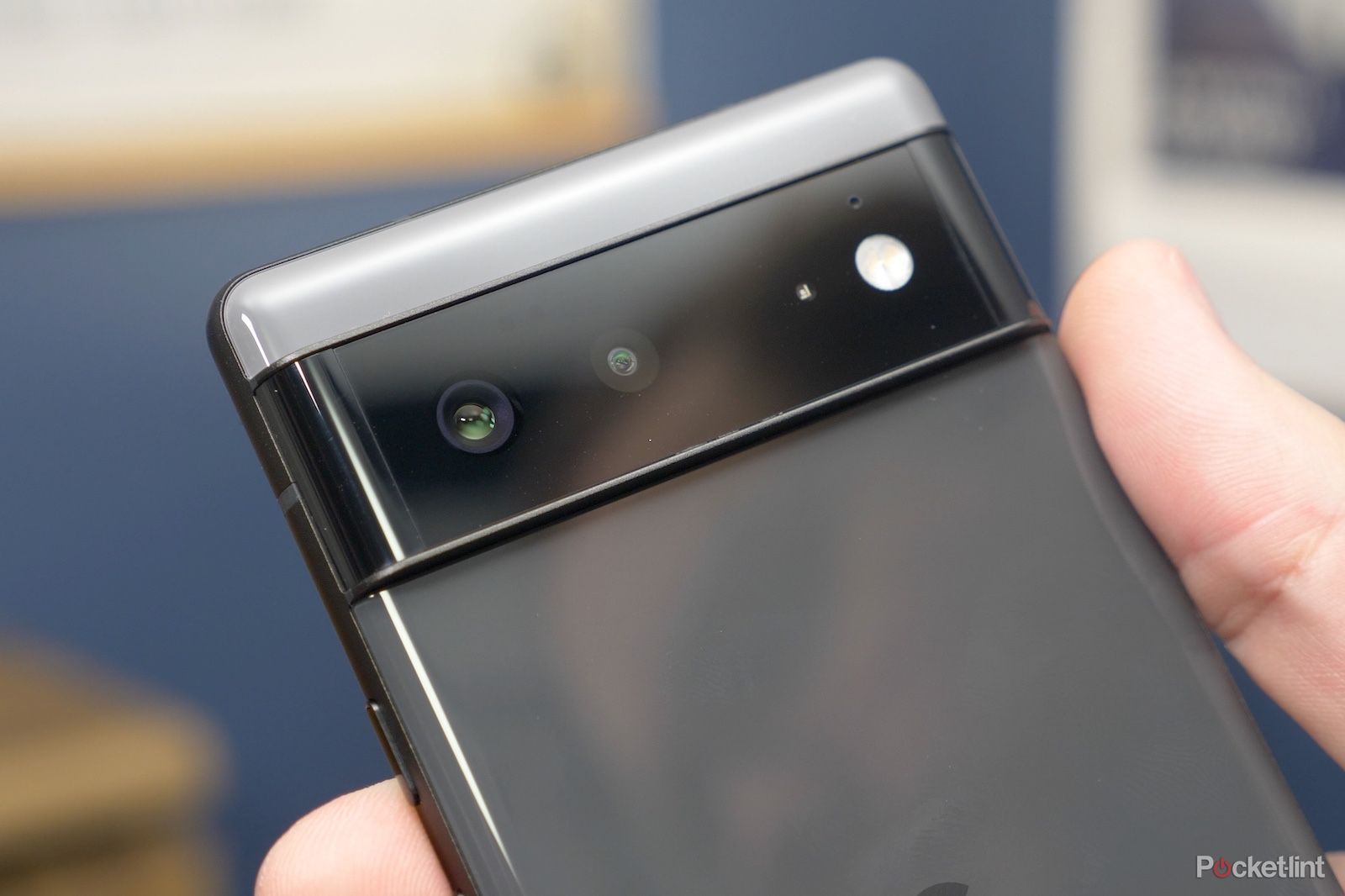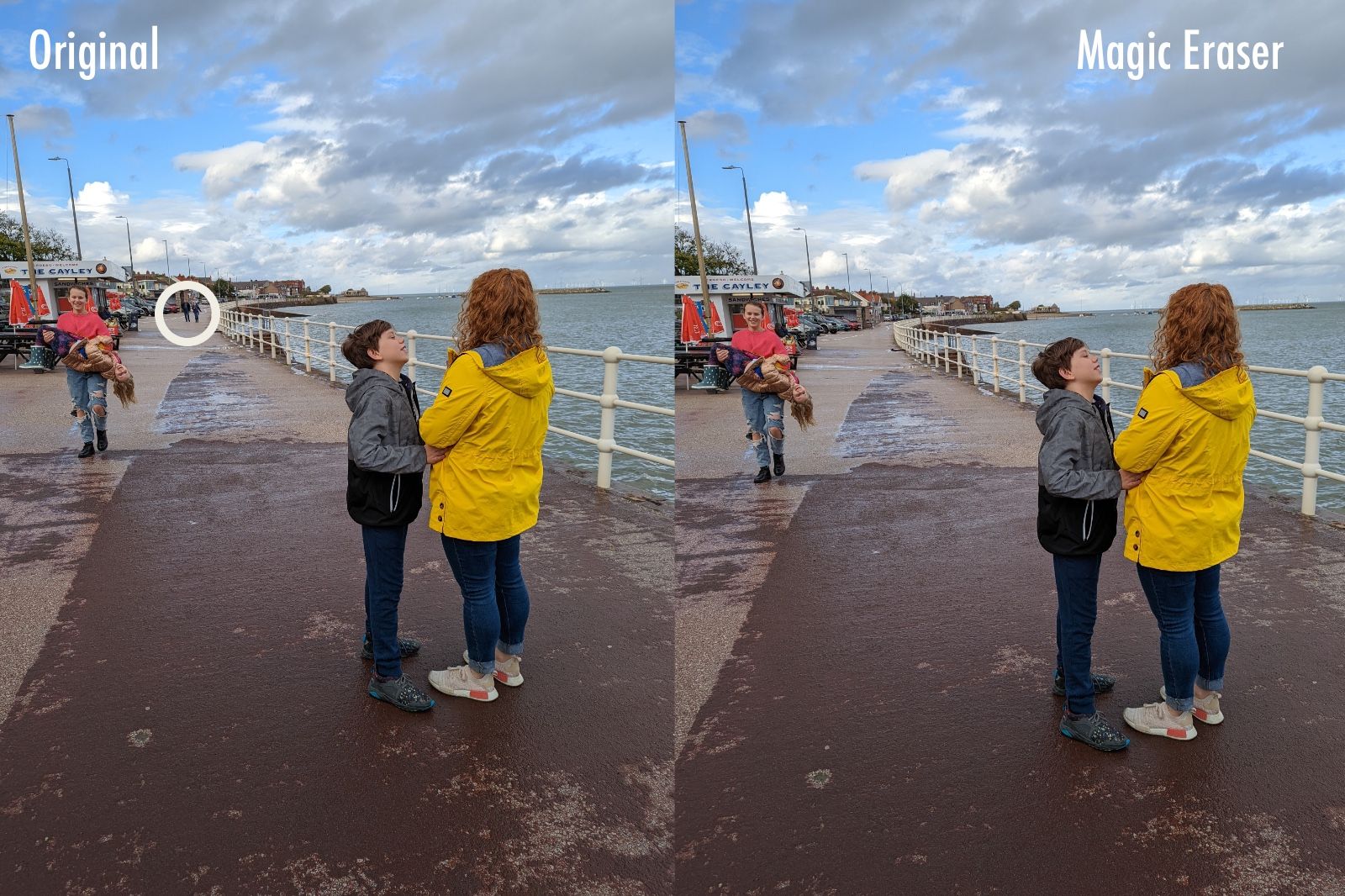The Pixel 6 is undoubtedly the worst kept tech secret in recent years. Predominantly because Google hasn't really wanted to keep it a secret. Instead of keeping hush on the leaks when they first surfaced, Google confirmed them and has been pushing big marketing bucks behind the phone in the run-up to the official announcement.
Google's messaging has very much been that this is the next cool thing, an Android phone for people with their finger on the pulse, those who want to be different to everyone else. It's a trendy phone. With its unique design and fresh software experience, it'll certainly get people interested, that's for sure.
Our quick take
There are two big talking points with the Pixel 6: the unique design and the Google-made Tensor processor. This focus on creating a phone that's visually distinct from everything else on the market, while also investing in its own home-grown silicon, suggests Google is taking this whole smartphone thing very seriously.
This hardware, matched with Google's computational work in the background, and the Android 12 software elevate the Pixel 6 to more than the sum of its parts. It's a genuinely great phone that delivers in all the right ways, and makes you smile while it does it.
You get virtually flagship levels of performance, a great screen, good battery life, and software that not only enables a unique style, but is also updated with new features and security patches regularly. What's more, you'll get those security patches for five years. All in a phone that doesn't cost anywhere near as much as some of the big premium devices.
The Google Pixel 6 has got the balance of everything just about right. It's unique - which isn't something you can say about any product very often - and we think it's a genuinely great handset.
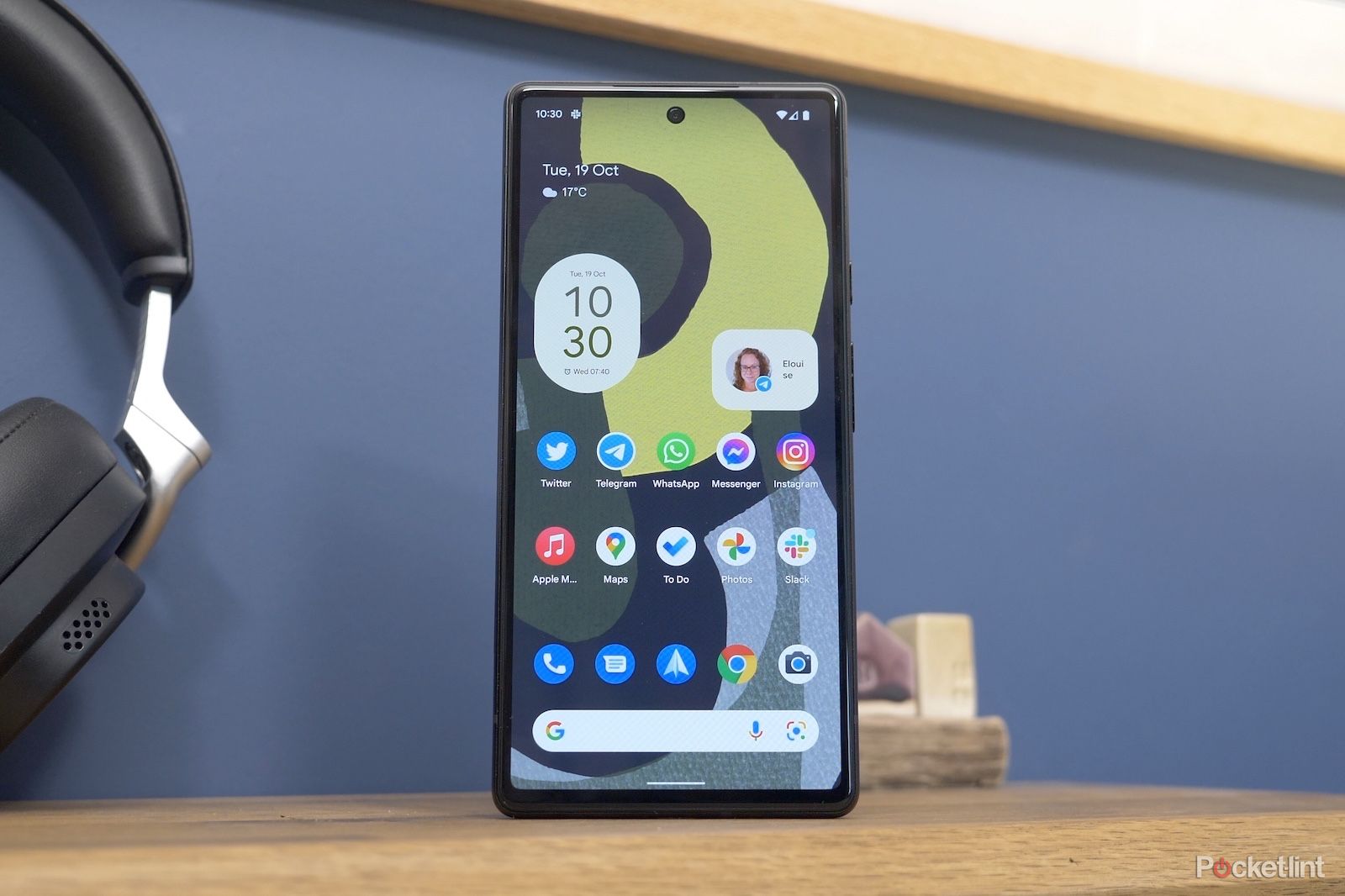
Google Pixel 6 - 4.5 / 5
| FOR | AGAINST |
|---|---|
|
|
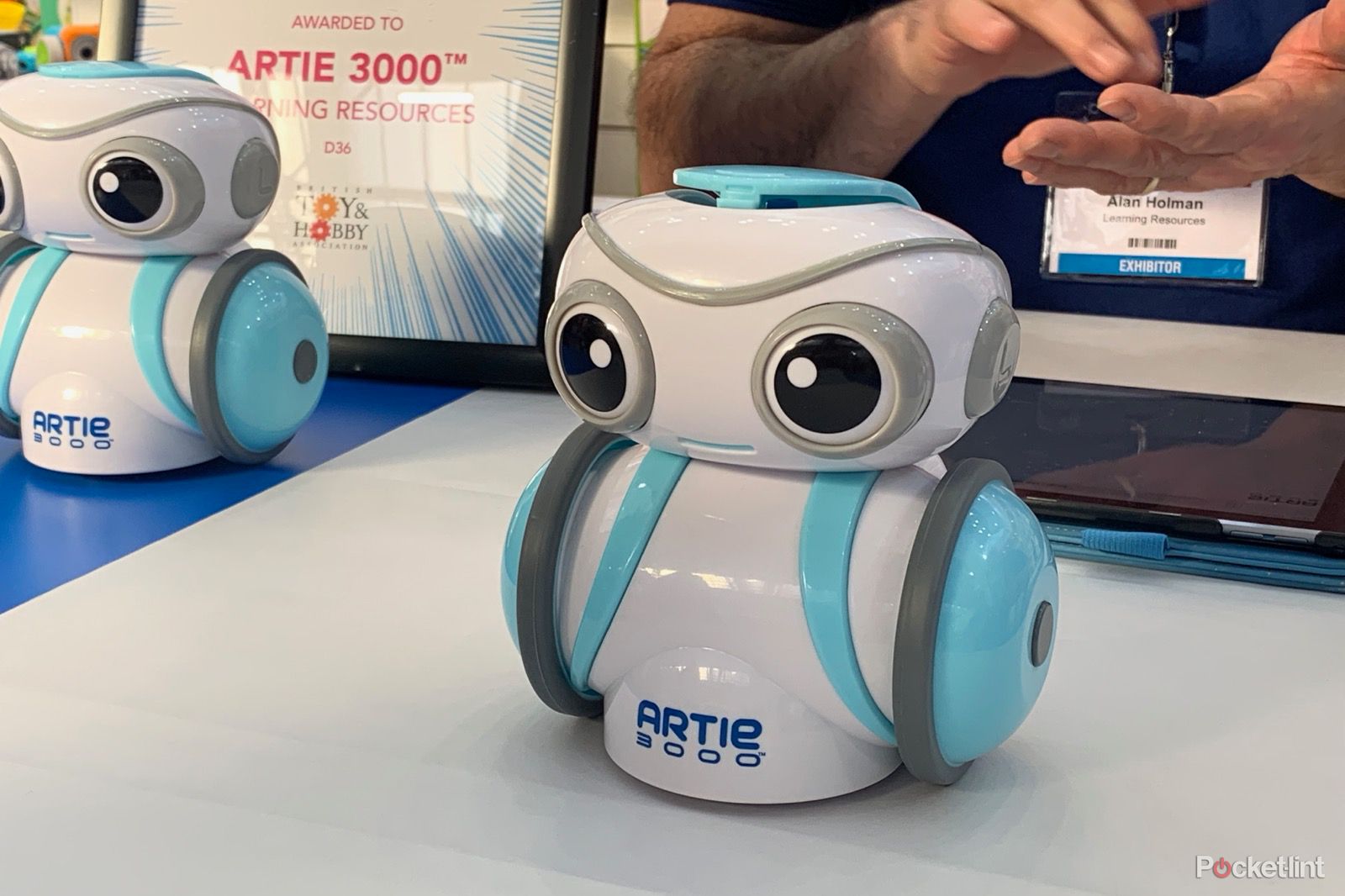
Artie 3000
Artie is a great way to learn some basic coding, but also really good fun.
Like no other
- Finishes: Stormy Black, Sorta Seafoam, Kinda Coral
- Dimensions: 158.6 x 74.8 x 8.9mm / Weight: 207g
- IP68 water and dust resistant
- Corning Gorilla Glass Victus
It's safe to say that whether you look at it from the front or the back, the Pixel 6 doesn't quite look like any other Android smartphone on the planet. It's about as different as a glass rectangle can be.
Part of that distinctiveness is down to the design of the frame and bezel. It's very angular and right-angled, but still has skinny bezels. Rather than go with a rounded appearance around the corners with an internal curved corner in the bezel, Google has opted to make them much more square. In a way it almost has a Nokia Lumia-esque vibe about it. To us, that's a good thing.
Despite those right-angled corners, the frame is still rounded, to make it feel comfortable in the hand. A feel that's further enhanced by the slight curves in the glass on the back of the phone. It doesn't feel sharp or flat like the iPhone 13. Being much larger and less round than the Pixel 5, it's not quite as ergonomic as that predecessor though.
The size and weight mean the Pixel 6 is hardly the most nimble smartphone on the market, but Google has tried to alleviate some of your potential stretching by adding a one-handed mode in Android 12. Similar to Apple's Reachability feature in iOS, this lets you drag down content from the top of the screen further down, so you can reach it with a thumb.
It's on the back of the phone you'll find the most striking difference between the Pixel and other phones. Just one glance and anyone will see it's not quite the same as other devices. There's no rectangular, square or pill-shaped camera protrusion in the corner. Instead, Google has spread the camera unit across the entire width of the phone.
The protrusion is capped at the top and bottom by an aluminium frame that joins with the main chassis of the phone, and solves a minor issue with the usual corner-placed method. It means when you lie the phone on its back, it won't wobble about.
It's hard to fault the design and build quality much. The frame has a sturdy feel - it's durable thanks to having Corning Gorilla Glass Victus and IP68 rating against water and dust ingress. The buttons on the right are clicky and responsive. But the camera ridge does seem to scrape fluff and other minutiae, collecting it on the back of the phone from our pocket.
Apart from that, it's all pretty standard in terms of layout. The volume rocker and wake/sleep key live on the right edge, the SIM tray is on the left, and a Type-C port to the bottom. There's no physical fingerprint sensor, though, instead Google went with an optical in-display sensor, while there's a centrally placed front-facing camera that punches through the top of the display.
The regular Pixel 6 comes in three colours. Our review unit is the Stormy Black, which features a tri-tone finish with dark grey forming the predominant colour on the back, with a black camera panel and a lighter grey panel above that. This is undoubtedly for those who want a subtle finish because it's the other colours that'll catch the eye of the expressive. There's a Sorta Seafoam and Kinda Coral, both of which are fresh and attractive looking. If we were choosing, we'd pick one of those instead.
Display
- 6.4-inch OLED panel
- 1080 x 2400 resolution (411ppi)
- 90Hz adaptive refresh rate
- 24-bit colour, HDR10 support
Reading down the display spec list reads pretty much like any other Android flagship phone. The Pixel 6 dons a Full HD+ resolution OLED display with 20:9 aspect ratio that can reach up to 90Hz refresh rates. It's not quite up there with the top 120Hz panels and beyond, but at the price point it's within that's no surprise.
Still, with up to 90 frames per second the screen is capable of fast, fluid motion. It's equally adept at handling colour and contrast too. With 24-bit colour capability it's able to display 16 million colours, supporting wide gamuts and with enough contrast and brightness to make HDR10 content look its best.
Watching movies on Netflix, Disney+ and Amazon Prime is a thoroughly enjoyable experience. A big part is obviously down to the qualities of the display and the image processing. Dynamic range is very good, with bright spots in HDR-capable titles appearing piercingly bright, without losing texture and detail in the darker areas.
The darkest parts are inky and deep, while colours have a vibrant and attractive tone. Whether you watch something natural and real like After Life on Netflix, or something a bit more colourful and hyperreal like Free Guy on Disney+, the panel is adept at showing the movie colours in the way they were intended.
It's not a perfect panel though. Being a little nitpicky, the colours do shift a little when looking at it from an angle. Look at a white screen and adjust the angle and you'll start to see some minor green and pink tinting. It's rarely an issue though.
Android 12's unique charm
In its announcement event for Android 12, Google waxed lyrical about how the 2021 iteration of its phone's operating system was designed to reflect you and your unique tastes. Its marketing campaign around the Pixel 6 has been all about being unique, being cool, being you. And it is Android 12 that lets you express that most clearly.
While Android has always been very customisable, Android 12 has taken it up a notch with the Pixel and created something that's aesthetically more tunable and tweakable but - more importantly - added a little dash of whimsy into the mix.
One of the big changes is how theming works across the entire system. Unlike previous iterations, it's not just a case of changing accents in some menus, it changes your entire colour scheme and it does so for the built-in Google keyboard, any Google apps like Gmail, Messages, Phone and Calculator (among others), and anywhere else on your phone that isn't a third-party application.
In the customisation screen you can choose colours yourself, but it automatically pulls out the prominent ones in your chosen wallpaper. So as soon as you change a wallpaper, all the colours change, for all the layers of the interface and the Google apps on board. It's pretty fantastic.
The only part that lets it down is the themed icons, an element of the software that's currently in beta. This changes your app icons to match the coloured theme too, but sadly only works on Google's apps. It doesn't work with third-party app icons, so if you enable it you'll end up with a mish-mash of colour icons interspersed with themed ones. Which doesn't look good.
Widgets are up there as one of the stars of the show too. Again, for Google's own apps and system functions like Weather, Photos and Clock, you can add widgets of various sizes and shapes. The clock widget, for example, can be a scalloped widget, or round, or a bulbous 'x' shape. For the apps that have this added functionality, it's a nice change. We hope it's adopted by third parties too, because - again - if you use age-old widgets from third parties then the juxtaposition of styles is jarring.
While new pretty things are always welcome, there's more functionality in Android 12 too, particularly around privacy and security. Privacy Dashboard lets you glance at your permissions and see which apps have had access to things like your location, camera and microphone. It lets you easily disable access for any that seem to be acting suspiciously. What's more, there are big switches in the quick settings shade that let you disable mic and camera access completely.
There are other advanced features that run in the background. Things like the adaptive battery - which learns how you use your phone to avoid wasting power on things you don't use often - keeps your most-used apps running in the background. It even has adaptive network connection skills, optimising your usage of Wi-Fi, Cellular and Bluetooth to help the battery last even longer.
Then there's live translate which is more powerful than before, offering the ability to have smoother, less junky conversations with people who speak a different language to you.
Tensor power
- Google Tensor processor - Titan M2 security co-processor
- 4614mAh battery - 30W PD charging support
- 128GB or 256GB storage
- Qi wireless charging
The design of the Pixel 6 may be the first big talking point of Google's phone, but there is one other point that's probably more important: the processor. Google has gone down a similar route to the likes of Apple by dropping third-party silicon and using its own home-baked processor. It's called Tensor.
Google's claim is that you'll get an 80 per cent increase in the Pixel 6's performance compared to the Pixel 5. That older phone, however, was powered by the Snapdragon 765G processor, which wasn't the most powerful on the market at the time. We're sure if you benchmarked Tensor against something like the Snapdragon 888 that it would score less, but Google's platform wasn't just designed to be an almighty powerful chip for driving excessive graphics and speed.
Tensor is all about its neural engine, a more brain-like approach for its computational machine learning elements. Everything from the algorithms that figure out all the advanced camera features, image and language processing and everything else are powered by this approach.
There's nothing about the everyday performance of the Pixel 6 that ever gave us cause for concern. It's fast, responsive and can handle any game you throw at it too.
Likewise, the battery inside is similar in capacity to what you'll find in many flagship Android phones. At 4614mAh capacity, there's easily enough to ensure you can get through a workday on a single charge. In fact, even on our heavier usage days, we struggled to completely drain it. On lighter days, with moderate three hours of screen usage, we'd get to bedtime and find we had over 40 per cent left.
Its 30W charging capabilities aren't lightning quick - but are enough to ensure you're not wasting hours waiting for the phone to refill when empty. That is if you have a 30W Power Delivery capable charger - as it doesn't ship with one in the box. The Pixel is also wireless charging capable, so if you pick up the new Pixel Stand then you can charge it quickly without the need to plug it in.
Pixel perfect
-
Dual camera system:
-
Main: 50-megapixel, f/1.85 aperture, 1/1.31-inch sensor size
- Optical image stabilisation (OIS), Electronic image stabilisation (EIS), laser-detect autofocus
- 'Super Res Zoom' up to 7x
- Wide (114-degrees): 12MP, f/2.2
-
Main: 50-megapixel, f/1.85 aperture, 1/1.31-inch sensor size
- Selfie: 8MP, f/2.0
One major difference between this entry Pixel 6 and the Pro model in the line-up is the camera capabilities. The regular Pixel features a dual camera system made up of a primary wide lens and an ultrawide lens - but there's no mega zoom capability here like in the Pro.
The Pixel 6's main sensor is a 50-megapixel one that packs in enough pixels so that Google has been able to enable a feature called 'Super Res Zoom', essentially allowing you to use a digital zoom up to 7x. However, if you do push it to the 7x limit, the pixtures do start to get a bit mushy and lacking in detail. Stick to the 2x zoom and you'll get very passable shots though. Still not as sharp or good-looking as the 1x field of view, but certainly not bad.
On the whole, the primary and ultrawide cameras match each other fairly well, but the main camera unsurprisingly delivers richer results with better detail and natural depth. The ultrawide is at least colour matched for parity between the two, but doesn't do as well in low light and does introduce distortion towards the edges.
As is usually the case for Google's phone cameras, there's lots of computational work being done behind the scenes for processing colours, exposure and detail. But despite this hard work happening in the background, from a user point of view it's all straightforward - Google doesn't complicate things with lots of additional settings and options.
It's similar to Apple's iPhone in the way you just point and shoot, then the image signal processor and computational algorithms kick-in quietly to process the picture and make it look good. It sometimes has the tendency to boost colours a little bit too much, particularly when there are blue skies, but on the whole the pictures straight out of the camera look good.
There are additional somewhat playful settings too. Motion mode will allow you to shoot either a long exposure shot to produce effects like light trails on moving cars or the milky effect on moving water, or shoot an action pan where you keep the subject in focus while it moves by, blurring the background to make the subject looking like it's moving quickly. Both modes are currently in beta - and you can tell.
For the action pan, we'd often have to try multiple times to get the shot we wanted. With a child running or riding a scooter, as examples, it would sometimes get the edge detection wrong, and blur parts of the face, or not blur parts of the backdrop that weren't the person or subject. Likewise, because it seems to use face detection to decide which bits not to blur, it doesn't work so well if you're shooting multiple people if only one of those is actually moving - because it will also make the other person's face sharp and blur-free, even if they're stood still.
Use it on something like a car, or anything with clean lines, and the effect is really quite magical. As is the long exposure that lets you create effects like light trails completely handheld, no tripod required. Again, it can take a few tries to get an effect that looks decent, but it's pretty remarkable that it's possible at all.
However, as magical as it is, it doesn't come close to Magic Eraser - which borders on genuine witchcraft. This mode is a new tool in Google Photos that lets you remove unwanted objects or items from your photographs. So you've taken a lovely landscape or cityscape and there's something in there ruining the shot. Well, now you can get rid of it.
Head to Photos and select the photo you want to change, tap Edit > Tools and hit the Magic Eraser button. Circle the thing/person you want to remove and it'll automatically get rid of it. Or if you have a photo with someone in the background, Photos will automatically suggest removing that.
The smaller the object and simpler the texture of whatever it is that's being blocked, the more effective it is. If you have a person photobombing and standing with nothing but sky behind them, that's an easy fix. But if there's a wall, or something with complex lines and shading, then it will probably look like a dodgy Photoshop job with smudges, mis-matched lines and weird shadows.
It's not so magical that it fills in the scene perfectly. For instance, if the person or object has cast a shadow, there may well still be an odd shadow in the scene. But it does a great job for the most part, and unless you zoom in really close, it genuinely looks like the original thing has just gone.
One other vital new inclusion for portrait photography and photography of people in general is Google's Real Tone push. This uses image processing for different skin colours that isn't biased to white skin. Regardless of your skin tone, your selfies and group photos should look a lot more realistic and natural, so you don't get unnatural green tints or grey/ashy looks in photos containing people with darker skin tones.
There doesn't seem to be any situation where the Pixel struggles to take good photos. Its night mode for photography in low-light conditions delivers among the best results we've seen from any smartphone.
Details are clear, but crucially Google's approach seems to be not just to brighten the highlights until almost the point of over-exposing and adding contrast to make it look sharp. It also effectively lifts shadows and colour, making it look balanced and (almost) colourful. Brighter areas are kept from over-exposing too, retaining their detail.
You can use night mode on both of the cameras, but the ultrawide struggles a bit once the light levels really drop. If there are no bright nearby sources of light - like a street light - you'll probably end up with a noisy grainy shot from that. Similarly, you'll also likely get some form of lens flare if the street light is in shot.

Artie 3000
Artie is a great way to learn some basic coding, but also really good fun.
To recap
There are two big talking points with the Pixel 6: the unique design and the Google-made processor. This focus on creating a phone that's visually distinct from everything else on the market while also investing in its own home-grown silicon suggests Google is taking this whole smartphone thing very seriously. And the Pixel 6 is one great result of that.

